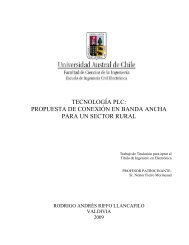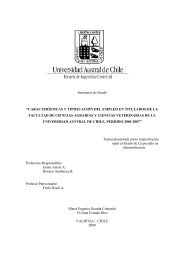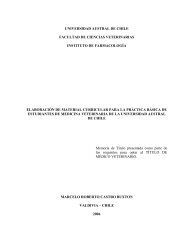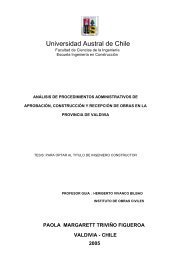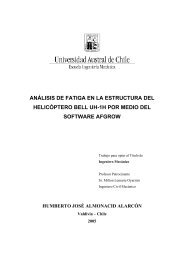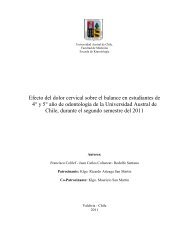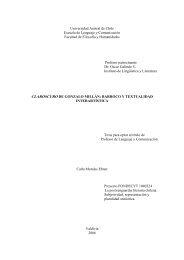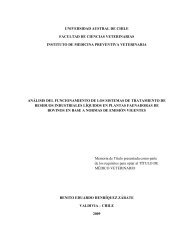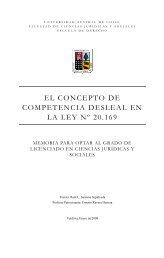Diversidad y control biológico de insectos - CyberTesis UACh ...
Diversidad y control biológico de insectos - CyberTesis UACh ...
Diversidad y control biológico de insectos - CyberTesis UACh ...
You also want an ePaper? Increase the reach of your titles
YUMPU automatically turns print PDFs into web optimized ePapers that Google loves.
prey attacked (Larochelle, 1990; Smith et al., 2004). In mid spring and early summer,<br />
Dalaca sp. larvae reach 5-6 cm long and 580 ± 167 miligrams (Devotto, unpub. data). This<br />
body size is 3 to 4-fold the body size of the most abundant species <strong>de</strong>tected in our study. In<br />
our dry pitfall traps, occasionally some Dalaca sp. larvae were caught. Carabid beetles<br />
readily preyed on them, but only when their numbers were much higher than Dalaca sp.<br />
larvae. At field, it is likely that the very active and strong Dalaca sp. larvae could escape<br />
from predation. If some species of the carabid assemblage do prey on mature larvae,<br />
potential candidates must be the large carabids such as Calosoma vagans and Ceroglossus<br />
chilensis, species that emerge latter in the season. The first species belongs to a gen<strong>de</strong>r<br />
commonly called “caterpillar hunters” because Calosoma tend to prey on lepidopteran<br />
larvae (French et al. 2004;, Toft and Bil<strong>de</strong>, 2002). Unfortunately, prey range of these<br />
species remains unknown, especially on C. vagans, which has a pre-oral digestión system.<br />
On the other hand, eggs and neonate larvae are abundant resources for several months in<br />
the pastures. The Dalaca sp. females bear up to 2000 eggs and they drop them over the<br />
pastures in a no directed way (Cisternas, personal comm.). In the Dalaca sp. breeding<br />
period, hundreds of eggs can be found at random on weed leaves, in the grass and at the soil<br />
surface, where they are exposed to predation, as well as neonate larvae. The potential role<br />
of carabids and spi<strong>de</strong>rs as predators of eggs and neonate larvae must not be dismissed and<br />
warrants further research.<br />
Spi<strong>de</strong>rs<br />
The lack of high numbers did not allow <strong>de</strong>tecting differences between treatments<br />
immediately after spraying. By day 30, lycosid and gnaphosid spi<strong>de</strong>rs increased in all plots,<br />
but the increase was higher in <strong>control</strong> and B. bassiana plots. The spi<strong>de</strong>r numbers kept<br />
growing by day 60 in the lambda-cyhalothrin plots, but in the <strong>control</strong> and B. bassiana plots<br />
the spi<strong>de</strong>r numbers were similar (lycosids) and lower (gnaphosids) than the spi<strong>de</strong>r numbers<br />
in the same plots in the previous sampling date. We did not distinguish spi<strong>de</strong>rs by sex nor<br />
did we record the size of the spi<strong>de</strong>rs trapped, but the authors noted females bearing egg sacs<br />
and spi<strong>de</strong>rlings only late in the sampling period, therefore the increase in insectici<strong>de</strong> plots<br />
by day 60 could be a re-distribution of adults rather than recruitment of new individuals.<br />
The size plot must not be an obstacle to cursorial movement of spi<strong>de</strong>rs, though they can<br />
cover consi<strong>de</strong>rable daily distances (Kiss and Samu, 2000). These findings confirmed that<br />
61



